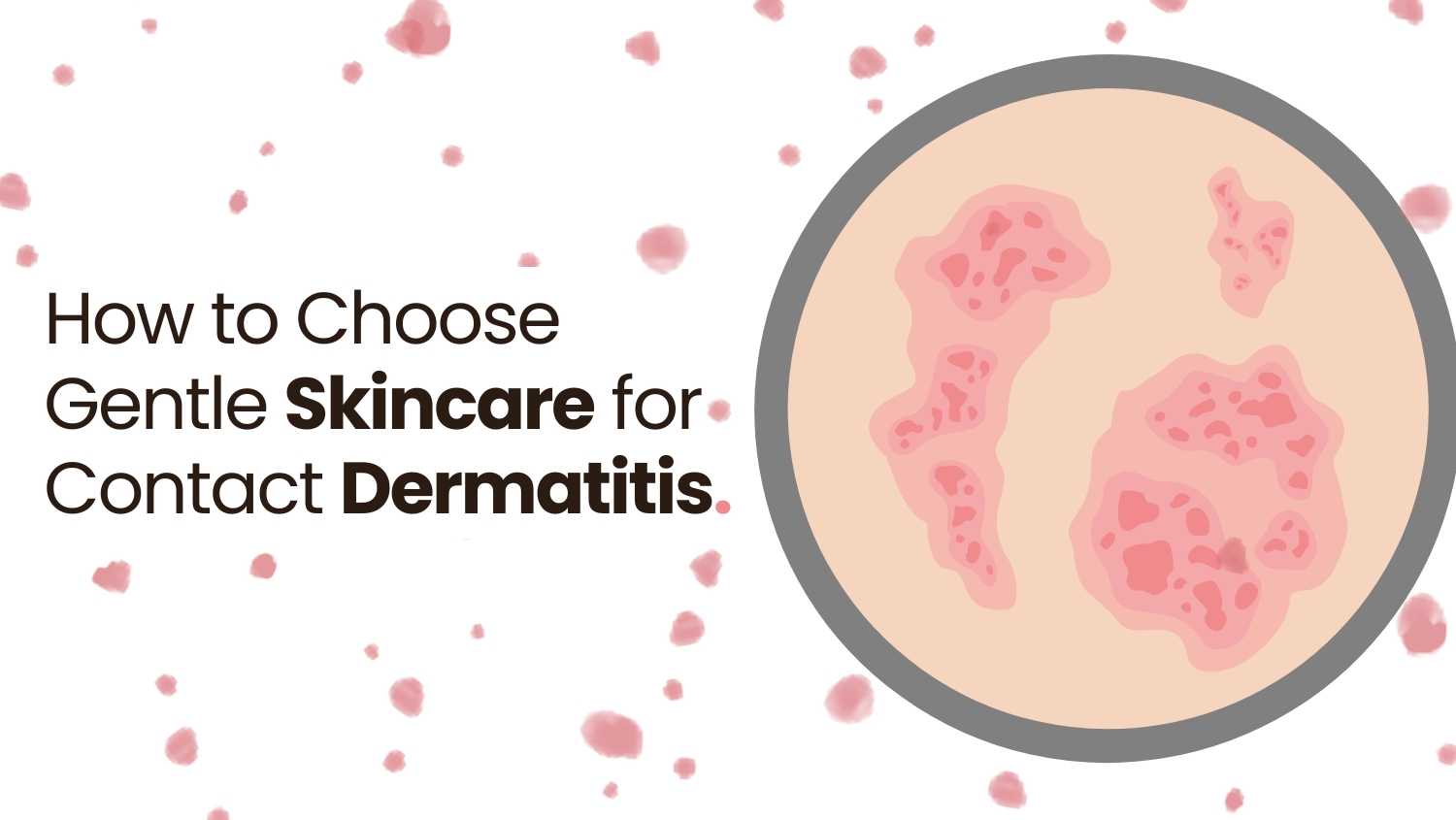How to Choose Gentle Skincare for Contact Dermatitis.
Choosing skincare when you have contact dermatitis is like walking through a minefield: one wrong ingredient and your skin may react with redness, itching or even blisters. But with careful selection and a stripped back routine, you can calm inflammation and restore your skin’s barrier. In this article you’ll learn how to find suitable products, spot common irritants and build a gentle regime that supports healing without overwhelming sensitive skin.
Understanding Contact Dermatitis
Contact dermatitis occurs when the skin’s barrier is compromised by an irritant (irritant contact dermatitis) or an allergic reaction (allergic contact dermatitis). In either case the result is an inflamed epidermis which can feel tight, sore or itchy. Common culprits are fragrances, preservatives, detergents and certain metals. The key is to minimise exposure to these triggers and supply your skin with the essential oils and hydrators it needs to heal.
Selecting a Mild Cleanser
Cleansing might seem counterintuitive when the skin is already inflamed but removing pollutants, sweat and residual products is essential to prevent further irritation. Look for a soap free, pH balanced wash that won’t strip natural lipids. For example a gentle face wash for sensitive skin often has minimal surfactants. Apply with lukewarm water, massage in a circular motion then rinse thoroughly and pat dry with a soft clean towel.
Try to cleanse only once a day during a flare up – ideally in the evening – to remove any environmental debris and makeup. In the morning a simple rinse with water or a light mist may be enough, to reduce the risk of over cleansing.
Incorporating Hydrating Toners
Most toners are alcohol based and designed to shrink pores, but these can dry and sting. Instead choose a hydrating formula that adds moisture without astringency. Products with hyaluronic acid are particularly good: this natural humectant draws water into the skin, plumping and soothing the epidermis.
After cleansing (or rinsing) spritz or apply this hydrating liquid onto slightly damp skin. The hyaluronic acid will help lock in any remaining moisture and prepare the skin to absorb the next creams more deeply. You may see “toner hyaluronic acid” in product descriptions; this just means a light, water based hydrator with that ingredient.
Choosing a Restorative Cream
A rich moisturiser works hard to repair the barrier and lock in hydration. Look for formulas that combine occlusives (dimethicone or petrolatum) with emollients (ceramides and natural oils) and humectants (glycerin or hyaluronic acid). Ceramides are lipids in skin; when replenished they restore resilience and reduce water loss.
Apply your barrier cream straight after cleansing or toning, while skin is still slightly damp. A little goes a long way: a pea sized amount spread all over the face will rebuild lipids without clogging pores. In severe flare ups you may even want to layer a thin film of ointment over your moisturiser for extra protection, especially at night.
Reading Labels Carefully
Words like “natural”, “hypoallergenic” or “dermatologist-approved” mean little. Buzzwords such as “natural”, “hypoallergenic” or “dermatologist-tested” offer no guarantee of safety. True peace of mind comes from reading the ingredients list. Avoid:
- Fragrances (as “parfum”, “fragrance” or “essential oils”)
- Parabens (methylparaben, propylparaben, etc.) and isothiazolinones (methylisothiazolinone)
- Harsh surfactants (sodium lauryl sulphate, sodium laureth sulphate)
- Strong alcohols (ethanol, SD alcohol)
- Colourants and dyes
On the other hand, look for products that mention ceramides, colloidal oatmeal, niacinamide or panthenol; ingredients that soothe irritation. Whenever possible, do a patch test (behind the ear or on the inner forearm) for 24 to 48 hours to see if you react before using on your face.
Building a Simple Routine
- Cleanse: Once daily with lukewarm water and a gentle facewash.
- Hydrate: Follow with an alcohol-free toner with hyaluronic acid.
- Moisturise: Seal in moisture with a barrier repair cream, reapply as needed.
- Protect: Use a mineral sunscreen (zinc oxide or titanium dioxide) every morning once active flare-ups have subsided.
Don’t layer multiple serums or exfoliants; each extra product is a potential irritant. If you want to add a treatment—like a soothing serum or calming mask—introduce it gradually, one new product every two weeks, to see how your skin reacts.
Additional Tips for Hands and Body
Contact dermatitis isn’t just on the face. For hands, which are washed and exposed to irritants all the time, apply an emollient cream after every wash and consider wearing cotton gloves under rubber gloves when using cleaning products. On the body, use fragrance-free washes and a thick cream or ointment—sometimes slathered on before bed—to restore dryness in areas that rub or friction.
When to Seek Professional Advice
If your rash doesn’t improve after 2 weeks of TLC or starts weeping, blistering or is super painful, see a dermatologist. They may do patch testing to identify allergens or prescribe topical corticosteroids to reduce inflammation.
Conclusion
Dealing with contact dermatitis can be a pain, but a thoughtful approach to product choice and routine can make all the difference. Go for a gentle facewash, add a hydrating toner with hyaluronic acid, and follow up with a moisturiser for face to rebuild and rebuild your skin’s barrier. Read labels with a magnifying glass, keep it simple and give each new product a trial run. With time and consistency you’ll not only calm down flare ups but also strengthen your skin against future irritation.


Leave a Reply